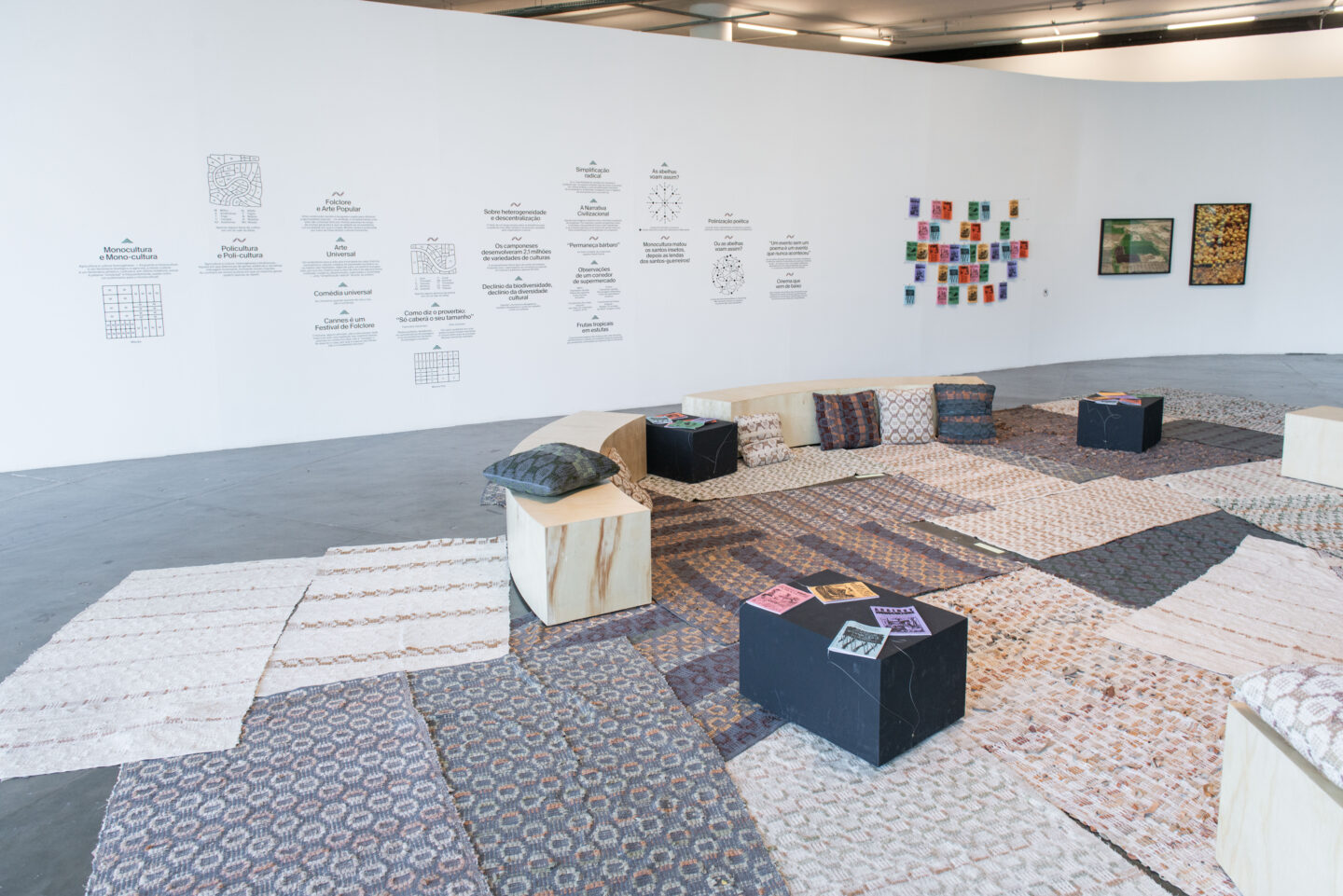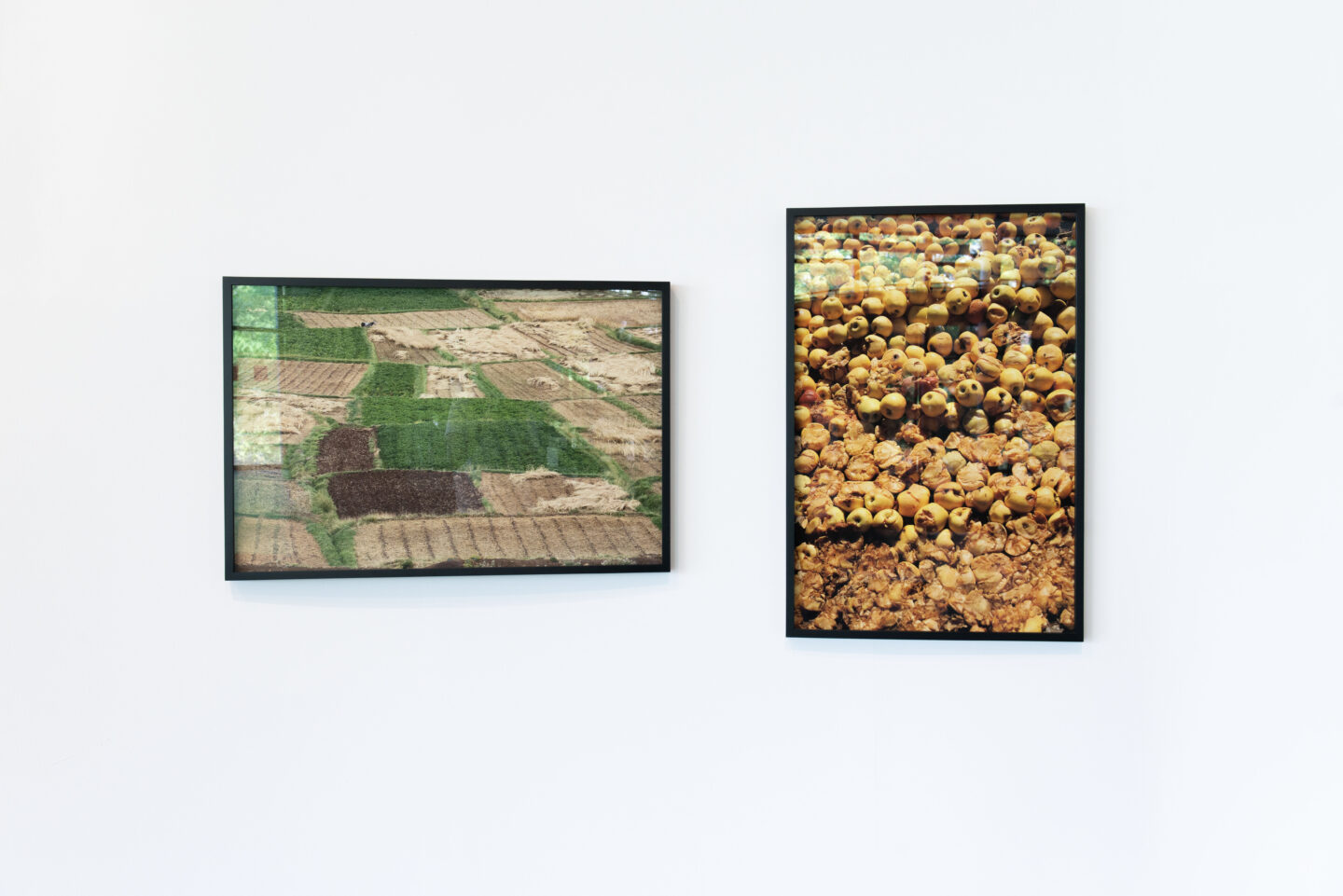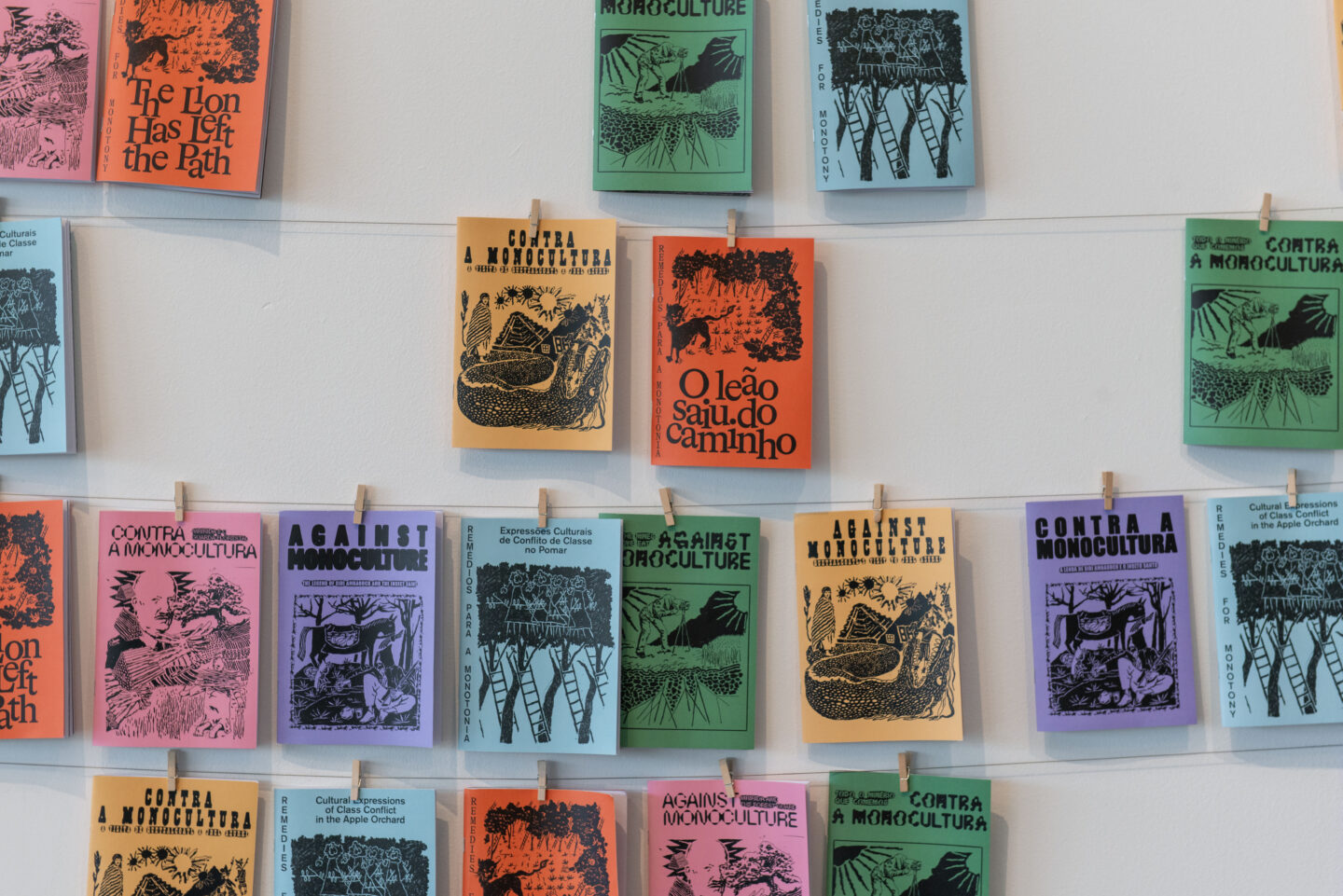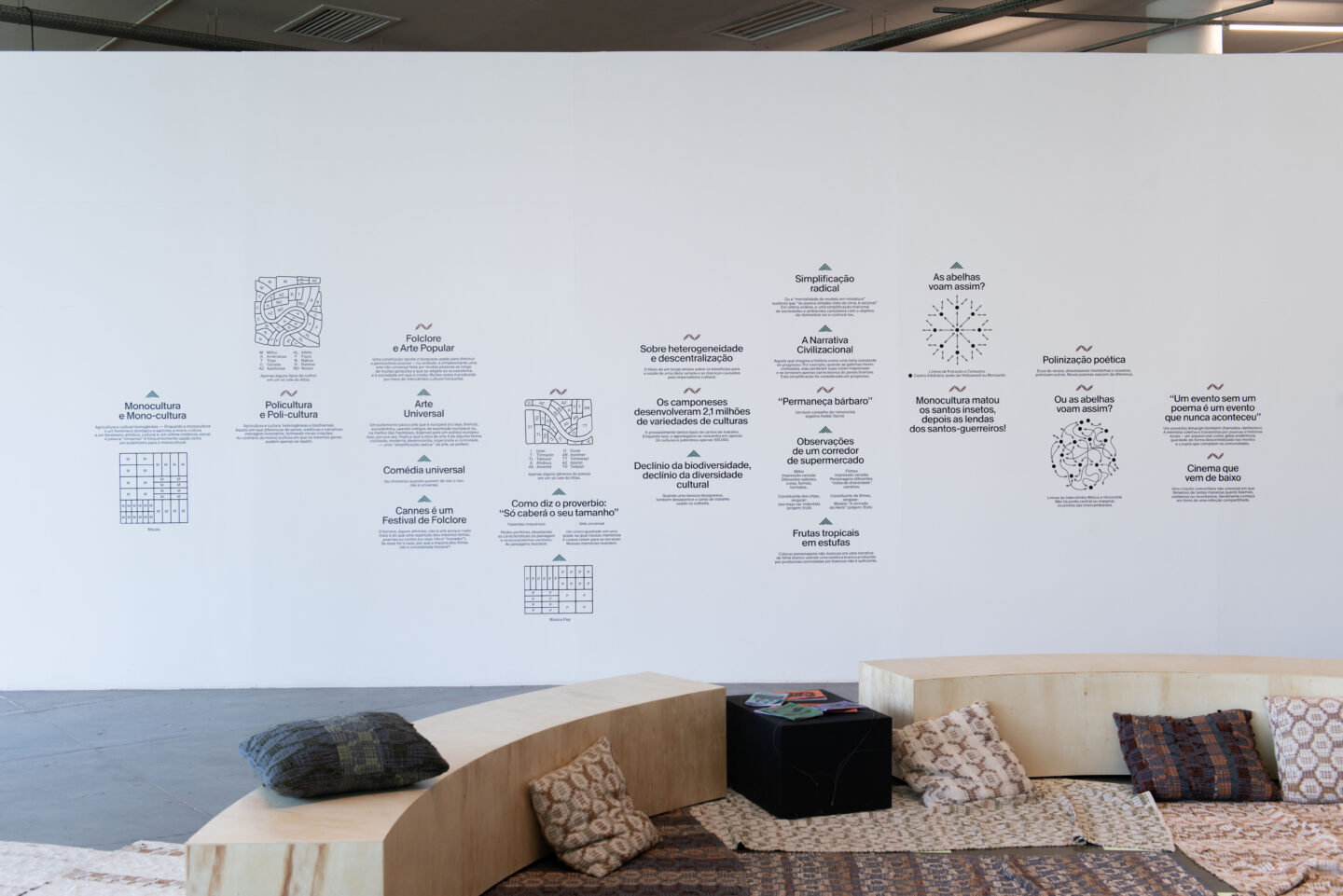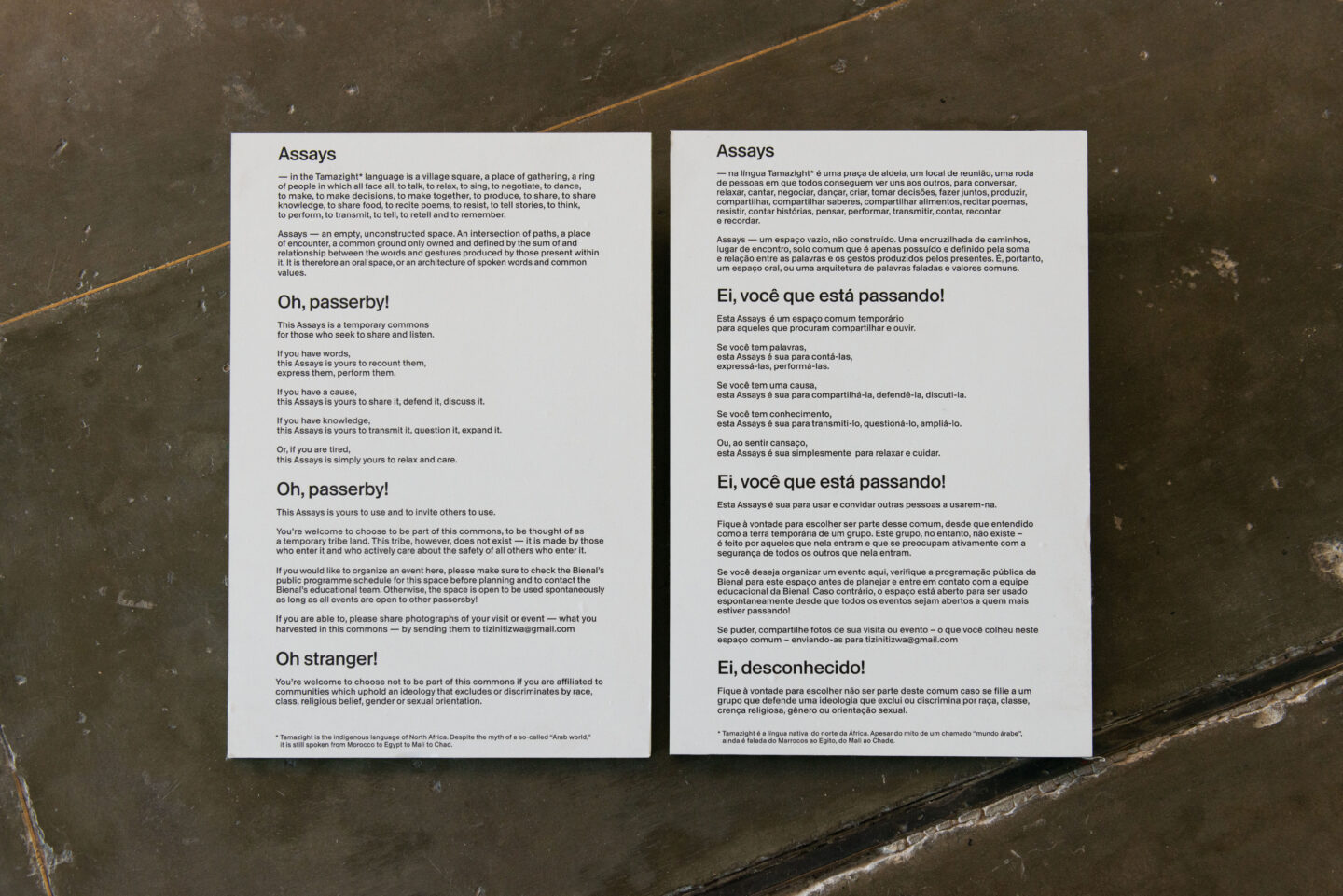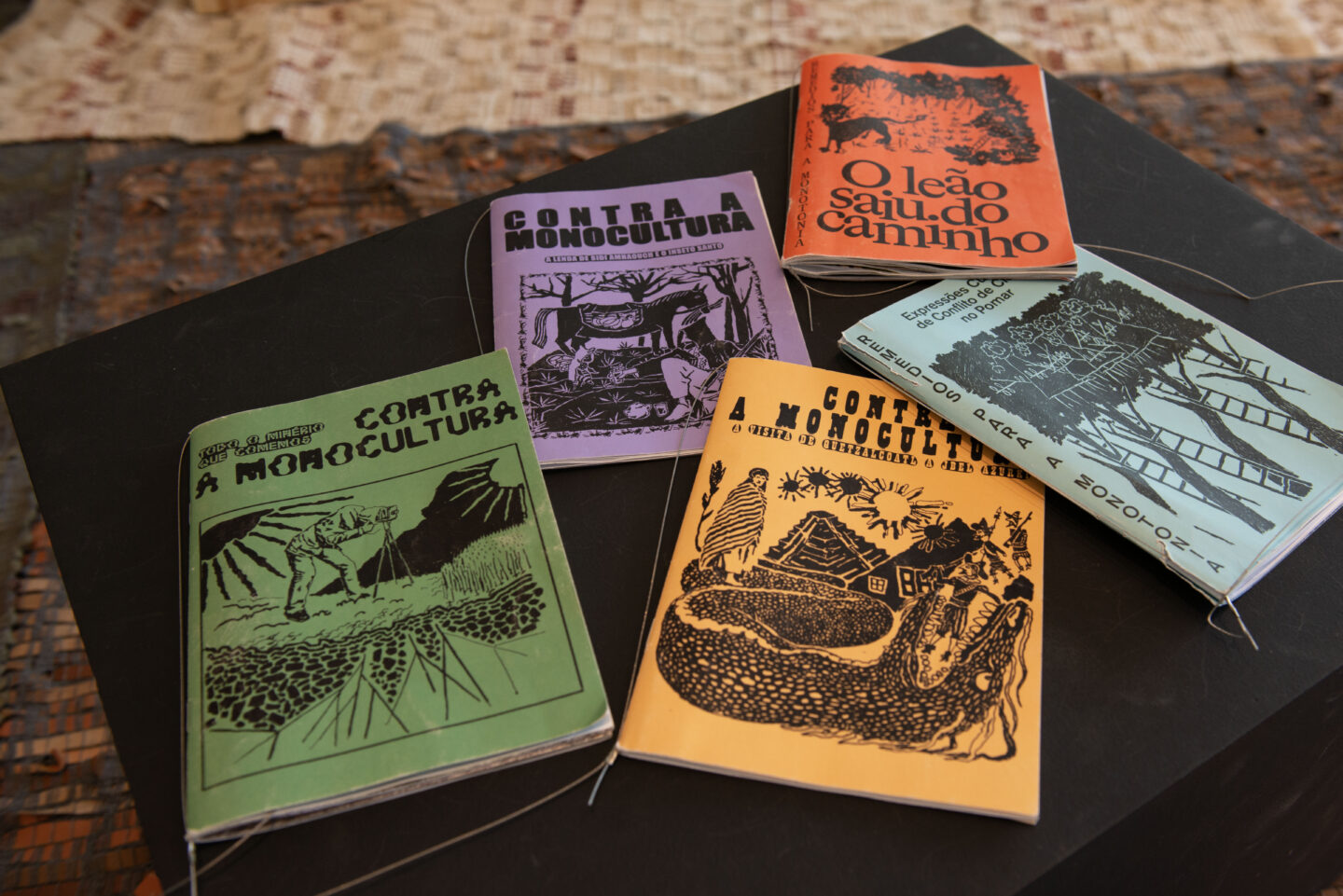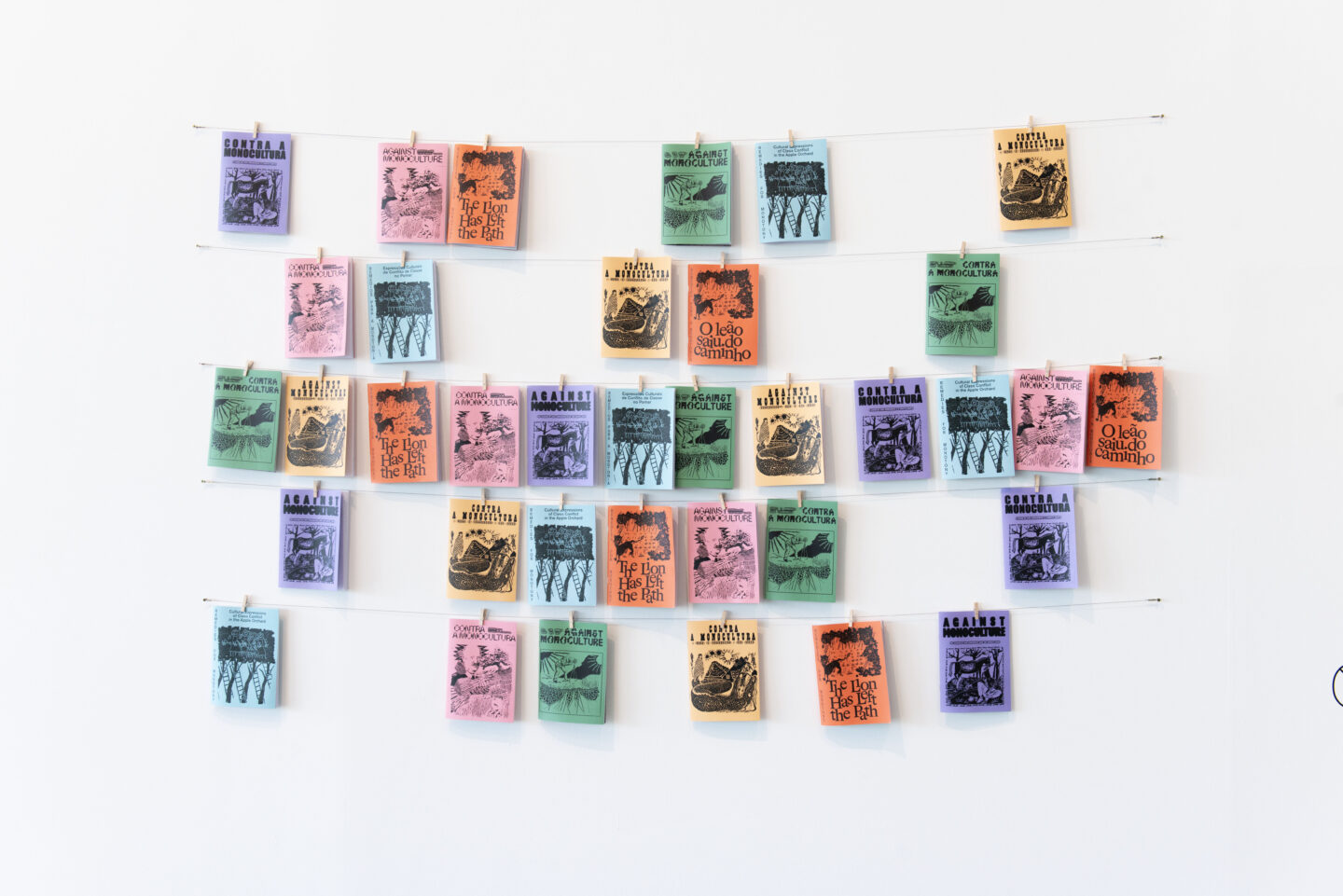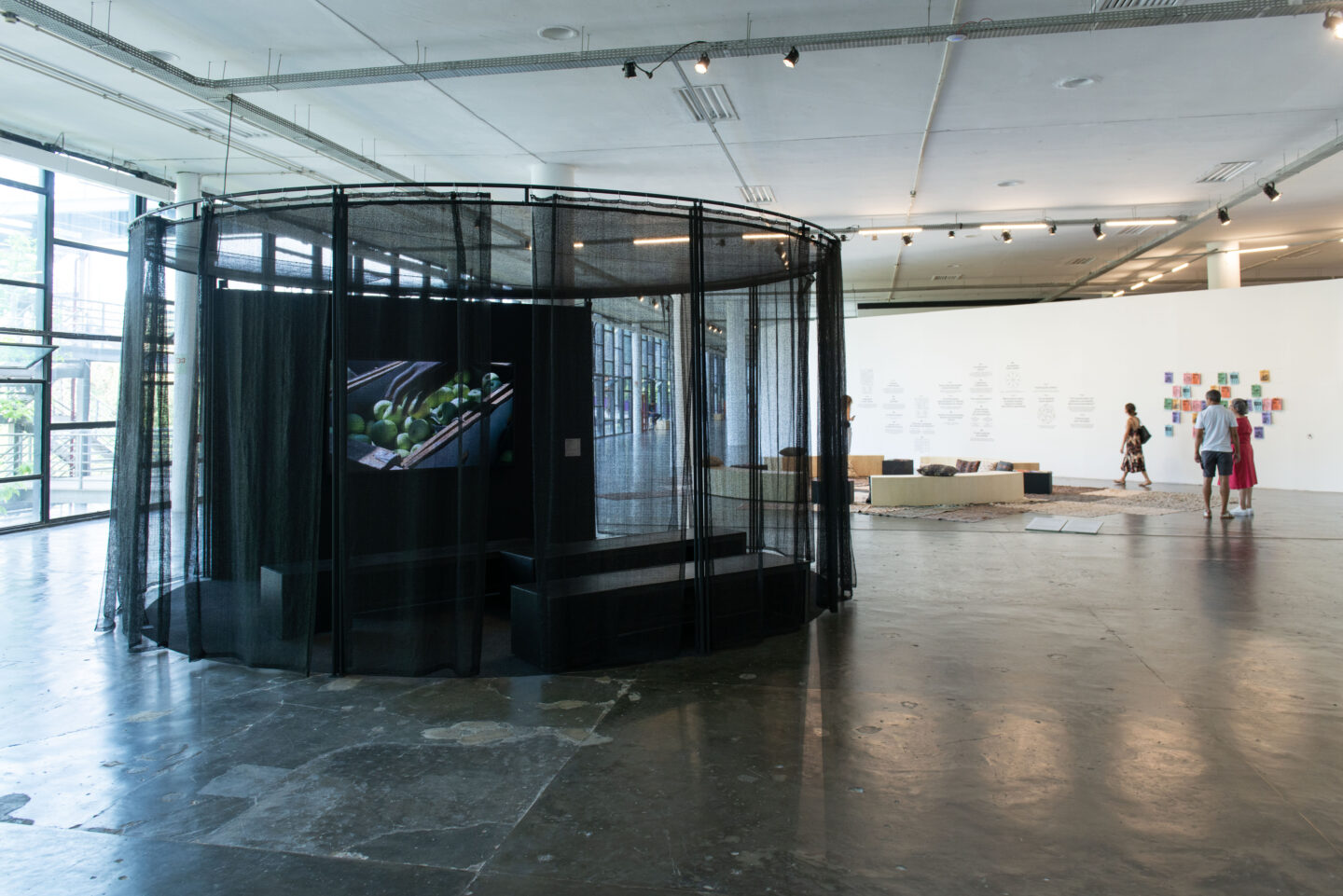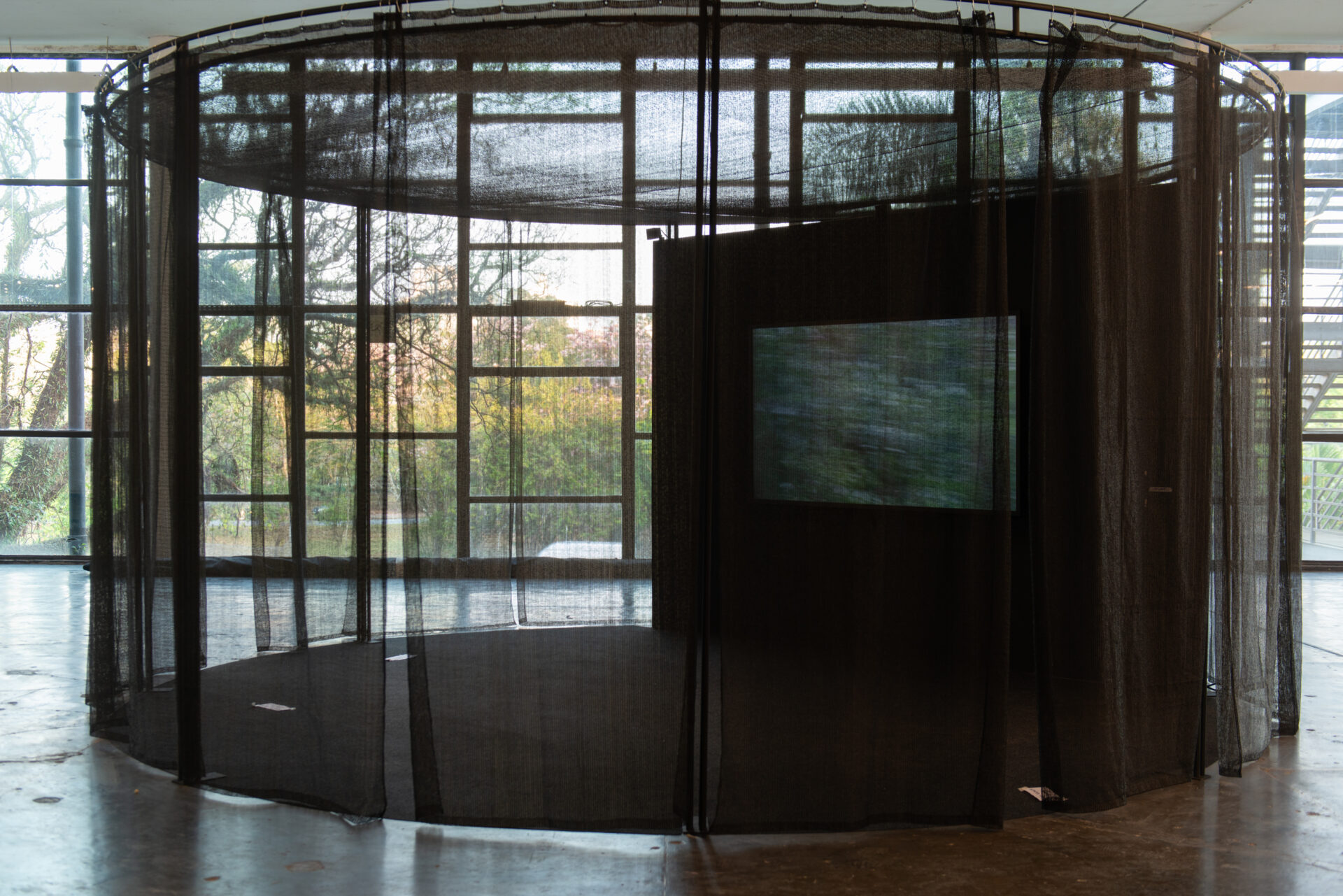
Nadir Bouhmouch & Soumeya Ait Ahmed
Every project by Soumeya Ait Ahmed and Nadir Bouhmouch is an attempt to carve collective spaces for making and sharing “from below.” In their view, art must stay connected to popular forms of culture and learn from ancestral modes of relation. They do not aim to represent a “national” culture, nor do they strive for “universality.” For them, such categories only serve to homogenize cultural production. On the contrary, they foreground specific, local traditions and strive to make them exist on a larger scale via forms of solidarity that extend beyond national borders.
This mode of thinking was obvious at Documenta 15, in the hospitality space offered by Le 18, a Marrakech collective of which Bouhmouch and Ait Ahmed are key members. It is also an essential engine of their Awal project, which investigates ways of documenting traditional oral arts and decolonizing contemporary practices in the Atlas and Southeastern regions of Morocco.
Amussu (2019), a feature-length film directed by Bouhmouch, portrays a rural community’s resistance against the largest silver mine in Africa, which has appropriated and polluted their water, destroying oases and almond groves. The film foregrounds the everyday lives and gestures of the villagers and their Indigenousindigenous, creative modes of political organizing and memory-making (multigenerational speaking circles, oral poetry, etc.). The filmmaking process took a cue from these very modes: Bouhmouch actively collaborated with the community of villagers, who became the film’s producers.
Bouhmouch and Ait Ahmed’s project for the Bienal de São Paulo brings together the various formats of their work (video, publications, performances, gatherings) around one challenge: the exhibition space must aspire to be an assays, that is to say, a village square in the Amazigh tradition, an assembly space; as they declare in their proposal to the exhibition: “a technology in which orality produces horizontal mechanisms for popular decision-making, conflict resolution, artistic creation, knowledge exchange and agricultural production – all at once.”¹1
omar berrada
1. Nadir Bouhmouch & Soumeya Ait Ahmed, from the proposal submitted to the 35th Bienal.
- Vista da instalação Assays: On Art & Food from Below,, de Nadir Bouchmouch e Soumeya Ait Ahmed na 35ª Bienal de São Paulo – coreografias do impossível © Levi Fanan / Fundação Bienal de São Paulo
- Vista de obras de Nadir Bouchmouch e Soumeya Ait Ahmed na 35ª Bienal de São Paulo – coreografias do impossível © Levi Fanan / Fundação Bienal de São Paulo
- Vista da obra Manshour – Cordel, Iteration #1 de Nadir Bouchmouch e Soumeya Ait Ahmed na 35ª Bienal de São Paulo – coreografias do impossível © Levi Fanan / Fundação Bienal de São Paulo
- Deatlhe da obra On Food and Art from Below, Non-Oral Iteration #1 [Sobre alimento e arte a partir de baixo, repetição não oral #1] de Nadir Bouchmouch e Soumeya Ait Ahmed na 35ª Bienal de São Paulo – coreografias do impossível © Levi Fanan / Fundação Bienal de São Paulo
- Vista da obra On Food and Art from Below, Non-Oral Iteration #1 [Sobre alimento e arte a partir de baixo, repetição não oral #1] de Nadir Bouchmouch e Soumeya Ait Ahmed na 35ª Bienal de São Paulo – coreografias do impossível © Levi Fanan / Fundação Bienal de São Paulo
- Vista da instalação Assays: On Art & Food from Below, de Nadir Bouchmouch e Soumeya Ait Ahmed na 35ª Bienal de São Paulo – coreografias do impossível © Levi Fanan / Fundação Bienal de São Paulo
- Detalhe da instalação Assays: On Art & Food from Below [Assembleias: sobre arte e alimento a partir de baixo] de Nadir Bouchmouch e Soumeya Ait Ahmed na 35ª Bienal de São Paulo – coreografias do impossível © Levi Fanan / Fundação Bienal de São Paulo
- Vista da obra A Seasonal Work Song de Nadir Bouchmouch e Soumeya Ait Ahmed na 35ª Bienal de São Paulo – coreografias do impossível © Levi Fanan / Fundação Bienal de São Paulo
- Vista da obra Manshour – Cordel, Iteration #1 de Nadir Bouchmouch e Soumeya Ait Ahmed na 35ª Bienal de São Paulo – coreografias do impossível © Levi Fanan / Fundação Bienal de São Paulo
- Vista da obra A Seasonal Work Song de Nadir Bouchmouch e Soumeya Ait Ahmed na 35ª Bienal de São Paulo – coreografias do impossível © Levi Fanan / Fundação Bienal de São Paulo
- Vista da obra Manshour – Cordel, Iteration #1 de Nadir Bouchmouch e Soumeya Ait Ahmed na 35ª Bienal de São Paulo – coreografias do impossível © Levi Fanan / Fundação Bienal de São Paulo
- Vista da obra A Seasonal Work Song de Nadir Bouchmouch e Soumeya Ait Ahmed na 35ª Bienal de São Paulo – coreografias do impossível © Levi Fanan / Fundação Bienal de São Paulo
Soumeya Ait Ahmed (Casablanca, Morroco, 1992. Lives in Marrakech, Morroco) is a cultural worker and curator at LE18, a multidisciplinary artistic space in Marrakech. She is also an independent producer and art-researcher whose practice revolves around developing collective approaches, tools and methods to translate orality into other artistic mediums, from cinema to architecture.
Nadir Bouhmouch (Casablanca, Morroco, 1990. Lives in Marrakech, Morroco) is a filmmaker and multidisciplinary artist whose works include films, photography, short stories and essays. His practice is driven by the expressions of rural societies, ecology and agriculture through the mediation of popular art forms. His works experiment with a filmic language inspired by North African oral traditions. Bouhmouch is also co-curator at LE18 arts space in Marrakech.
Both share the belief that ‘oraliture’ can be a potent source for unique aesthetics and narratives which break away from those inherited from former colonizers. Ait Ahmed and Bouhmouch are also co-founders of AWAL, an art and research project dedicated to the popular oral arts in Morocco.

 Português
Português